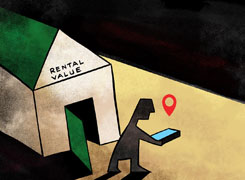Dear Sir, I am 32 years old. I have multiple loans, details below
- Auto loan -> outstanding amount 16 lakh -> emi 40k
- Auto loan top up -> outstanding amount 3 lakh -> emi 14k
- Over Draft Loan 1 -> 38 lakh -> emi 47k
- Over Draft Loan 2 -> 10 lakh -> emi 12k
- Personal loan 1 -> outstanding amount 4 lakh -> emi 12k
- Personal loan 2 -> outstanding amount 5 lakh -> emi 17k
My monthly in hand income is 1,88,750/-
My monthly expenses
- Sending 15k to my parents
- Rent 30k
- Monthly Expenses 50k
I live in Hyderabad.
My savings
- 1 lakh in Mutual funds, will mature in December
- 11 lakh in EPF
- 3 lakh in NPS
How can get out of this. EMI is huge and very hard to manage all.
Ans: You are 32 years old, staying in Hyderabad. Your monthly income is Rs. 1,88,750. But your EMI pressure is very high. You also have some decent long-term savings. Your question shows responsibility and the right mindset. That’s a good start.
Let’s now assess your situation fully and see step-by-step solutions.
?
Understanding Your Current Financial Structure
You are paying six EMIs.
?
Total EMI amount is Rs. 1,42,000 per month.
?
Your other monthly expenses are Rs. 95,000. That includes rent, groceries, parents.
?
Your total monthly outgoing is about Rs. 2,37,000.
?
Your in-hand income is Rs. 1,88,750.
?
That means, every month, you are in a negative cash flow of around Rs. 48,000.
?
This cannot continue for long.
?
You must act immediately. Else the pressure will only grow.
?
You also have savings of Rs. 11 lakh in EPF and Rs. 3 lakh in NPS.
?
Mutual fund of Rs. 1 lakh will mature by December.
?
These are helpful, but not enough for short-term rescue.
?
?
Break Down of All Existing Loans
Auto loan of Rs. 16 lakh – EMI Rs. 40,000
?
Auto top-up loan of Rs. 3 lakh – EMI Rs. 14,000
?
Overdraft loan 1 of Rs. 38 lakh – EMI Rs. 47,000
?
Overdraft loan 2 of Rs. 10 lakh – EMI Rs. 12,000
?
Personal loan 1 of Rs. 4 lakh – EMI Rs. 12,000
?
Personal loan 2 of Rs. 5 lakh – EMI Rs. 17,000
?
Together, this is too much EMI burden for your income level.
?
Action is required to reduce EMI burden fast.
?
?
Immediate Action Plan to Handle Debt Load
Do not take any new loans at all.
?
This includes credit card EMI and BNPL schemes too.
?
Sit with a Certified Financial Planner and create a debt priority list.
?
Pay off the highest EMI burden with smallest balance first.
?
Personal loan 2: EMI Rs. 17K for only Rs. 5L loan.
?
If you can close this, it will ease pressure by Rs. 17K.
?
Similarly, personal loan 1 is Rs. 4L but EMI is Rs. 12K.
?
Focus on clearing these two personal loans first.
?
You can consider part-withdrawing EPF to close one of these.
?
EPF partial withdrawal is allowed for repayment of loans.
?
It is better to close a high interest loan than keep EPF untouched.
?
Do not touch NPS now. It is not liquid and meant for retirement.
?
The mutual fund maturing in December can also help close part of another loan.
?
Avoid touching EPF entirely for now. Use only if no other option.
?
If possible, sell one of your vehicles and close auto loan or top-up.
?
This is tough. But temporary sacrifice helps long-term relief.
?
?
Restructuring Strategy for Existing Loans
Approach your bank for loan restructuring.
?
This is allowed in hardship cases by RBI guidelines.
?
You can request to increase tenure of personal loans.
?
That will reduce EMI and ease cash outflow monthly.
?
You can also consider consolidating all loans into one.
?
A debt consolidation loan may give lower EMI burden.
?
Approach bank where you have salary account.
?
Show all EMI proofs and request for consolidation or top-up loan.
?
Use that single loan to clear all smaller EMIs.
?
This is not new debt, only better restructuring.
?
?
Budget Correction and Expense Reduction
Your current household expense is around Rs. 50,000.
?
Plus rent and parents' support, total fixed cost is Rs. 95,000.
?
Review your monthly lifestyle budget very sharply.
?
Cut down online subscriptions, eating out, shopping.
?
Even saving Rs. 5,000 a month helps in EMI pressure.
?
Rent is Rs. 30,000. See if you can shift to slightly cheaper house.
?
Even Rs. 5,000 rent cut helps monthly flow.
?
Request parents to allow break in support for 6 months.
?
Or reduce support to Rs. 5,000 temporarily.
?
Explain situation openly. This is temporary.
?
These all together can give Rs. 10,000 to Rs. 15,000 cash flow.
?
?
Start Emergency Fund, Even Small Amount
You don’t have any liquid emergency fund right now.
?
Begin with saving just Rs. 1,000 or Rs. 2,000 per month.
?
Keep this in savings account or sweep FD.
?
Do not lock this in PPF or NPS.
?
Emergency fund gives you mental peace and confidence.
?
?
No New Investment Until Loans Are Handled
You already have EPF and NPS. That is enough for now.
?
Do not start new SIPs or gold chits until EMI load reduces.
?
Mutual fund maturity in December must go to debt closure.
?
Re-start new investments only after EMI comes below Rs. 70K.
?
That is your comfort level based on income.
?
?
Rebuild Credit Score Gradually
If you miss EMIs, your credit score will drop fast.
?
Restructuring loan is better than missing EMI.
?
Closing small loans improves credit score steadily.
?
Keep 100% payment record after restructuring.
?
?
Don’t Use Credit Cards for Loans Again
Do not take loan on credit card.
?
Interest is very high and can trap you quickly.
?
Pay credit card in full. No minimum due payment method.
?
?
Emotional and Mental Health is Also Important
Loan stress can cause worry and anxiety.
?
You are trying to handle the situation. That is good.
?
Talk to someone in family or trusted friend.
?
Keep your mental strength high. That helps decisions.
?
Every month, even 1 step ahead is progress.
?
?
Final Insights
You are facing heavy loan pressure, but solutions exist.
?
Prioritise high EMI, low balance loans first.
?
Restructure loans with bank. Try consolidation option.
?
Use EPF partial withdrawal only as backup plan.
?
Sell unused vehicle if required to reduce auto loan.
?
Pause all new investments for now.
?
Cut budget wherever possible.
?
Begin tiny emergency fund.
?
Mental peace and clarity will help you handle this better.
?
Follow this plan for 12 months and review again.
?
Things will improve. Stay focused.
?
Best Regards,
?
K. Ramalingam, MBA, CFP,
?
Chief Financial Planner,
?
www.holisticinvestment.in
https://www.youtube.com/@HolisticInvestment


























